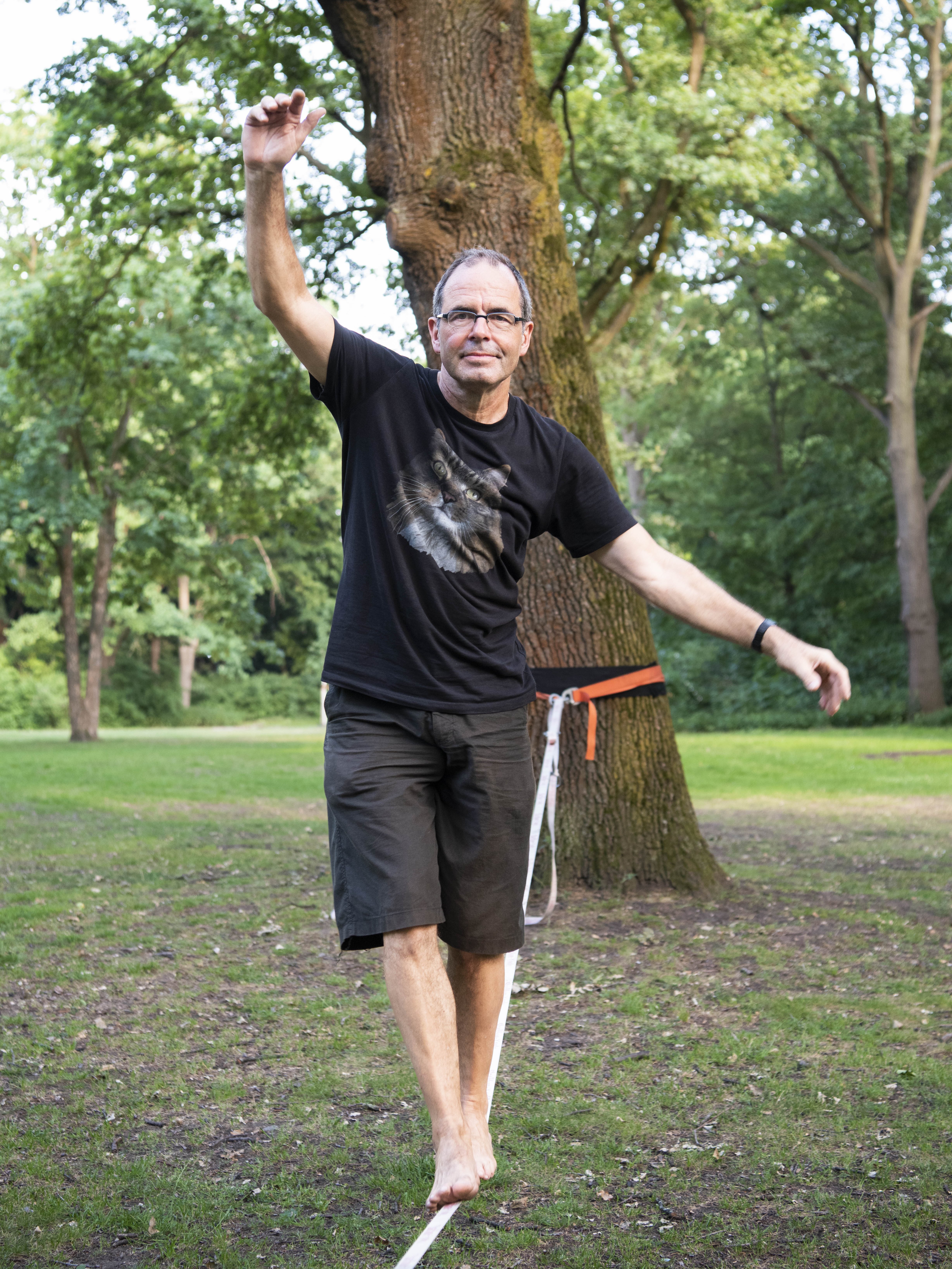- If I were not a musician ...

In this section, we introduce our readers to members of the orchestra and their extra-musical passions. Today it is the turn of the double bass player Martin Heinze, who likes to rise above things.
It is a truism that hobbies are a way of achieving a sense of balance in our everyday lives. For many leisure activities one needs to have very deep pockets. Playing golf can easily cost a couple of thousand Euros a year, and acquiring a yacht will set you back a small fortune. But this is not the case with Martin Heinze, whose hobby requires only two trees and a slackline. And the slackline can be bought for a little under fifty Euros.
This is a length of flat webbing that is slung between two anchoring trees. The slackliner balances on this webbing. At first sight the whole exercise recalls tightrope walking, but on closer inspection, it turns out that there is an important difference: in tightrope walking, the rope is generally very taut and barely moves, whereas the slackline hangs loosely and keeps wobbling, which is what gives this sport its particular appeal.
Martin Heinze was just twenty-two when he became the youngest member of the Bavarian Radio Symphony Orchestra in 1987. Six years later he switched to the Berliner Philharmoniker. Slacklining fascinates him. “It demands the perfect combination of balance, concentration and coordination,” he explains in conversation with Phil. “As with every form of integrated training, practically every group of muscles is involved.” As Heinze admits, it looks easier than it is: constantly having to keep one’s balance is enormously tiring. “When you start, I can guarantee that you’ll suffer from aching muscles,” he says with a grin.
Now fifty-eight, Heinze trains for a good hour once or twice a week – ideally in the open countryside. In order to prevent slackliners from falling and injuring themselves, they have to learn to jump off the line in good time, Martin Heinze explains, and it’s great to land in sand or on soft grass. If the weather refuses to cooperate, he can also use an indoor slackline at home.
“I see slacklining as a social activity, since it isn’t primarily a competitive sport,” Martin Heinze explains. He even has a couple of colleagues in the orchestra with whom he can share his hobby. “We meet up, everyone has their own lines, and off we go. It’s always tremendous fun.”
Asked about the best places where he has trained, Martin Heinze sounds positively rapturous. “I once went slacklining in Central Park in New York, which was a great experience.” But he also has his favourite spots in Lucerne, Baden-Baden and Salzburg, where the orchestra regularly makes guest appearances.
Whenever Martin Heinze is not playing in the orchestra, he is also active in various guises as a chamber musician. Central to his work as a chamber recitalist is the Ensemble Nukleus, which he formed with the pianist Heike Gneiting and his colleague Jan Schlichte. They are the only Philharmonic ensemble to devote themselves exclusively to contemporary music.
“Balancing on a slackline is a wonderful way of achieving balance in my life as a professional musician,” Martin Heinze sums up. “But it also helps me to concentrate and to make effective use of my physical resources. And it has helped me to improve my posture.” The fifty Euros that he spent on acquiring a slackline have undoubtedly been a good investment.

Martin Heinze
Profile of the double bassist of the Berliner Philharmoniker

Matthew McDonald: If I were not a musician ...
Double bass player Matthew McDonald loves poetry – and not only in music.

Hande Küden: If I were not a musician ...
Violinist Hande Küden could have pursued a career as a professional athlete.